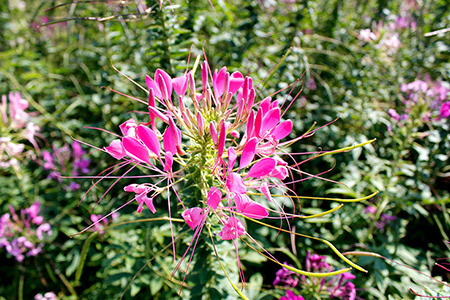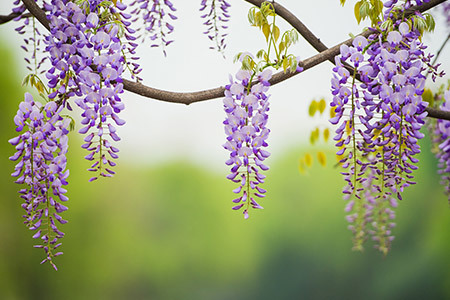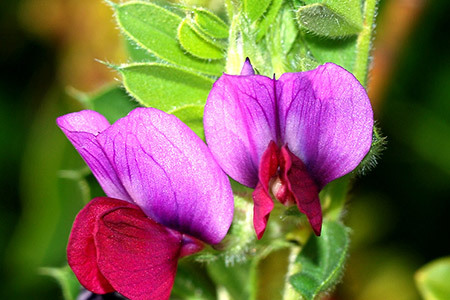Chicory
Chicory is a perennial herbaceous plant of the Asteraceae family. This variety is characterized by good adaptability, high nutritional value, a long supply period, and resistance to pests and diseases, making it a promising new variety of forage and economic crop with great potential for promotion and utilization. Chicory thrives in warm and humid climates and is suitable for planting across the country, growing especially rapidly at temperatures between 15°C and 30°C. It is relatively cold-resistant, with its fleshy underground roots able to withstand temperatures as low as -20°C, and the leaves remain deep green even at -8°C. Chicory does not have strict soil requirements, but it grows best in fertile sandy soil; it has high demands for moisture and fertilizer but should not be waterlogged in the field. Throughout its growth period, it is free from pests.
Classification:
Forage and green manure seeds
Telephone:
Product Description
Chicory is a perennial herbaceous plant of the Asteraceae family. This variety has characteristics such as good adaptability, high nutritional value, long supply period, and resistance to diseases and pests, making it a promising new variety of forage and economic crop with great promotion and utilization value. Chicory prefers a warm and humid climate and can be planted in various regions across the country, growing especially rapidly at temperatures between 15°C and 30°C. It is relatively cold-resistant, with underground fleshy roots able to withstand temperatures as low as -20°C, and the leaves remain deep green even at -8°C. Chicory has no strict soil requirements, but it grows best in fertile sandy soil; it has high requirements for moisture and fertilizer but should avoid waterlogging in the field; there are no pests throughout the growth period.
1. Land Preparation and Fertilization
Chicory has a developed root system and must be deeply plowed. During deep plowing, apply 2500 kg of well-rotted manure per acre as base fertilizer. After plowing, finely rake the soil to ensure a level seedbed.
2. Precise Sowing
Sowing can be done in spring, summer, and autumn, with autumn (early August) being the best time. For field sowing, the seeding rate is 0.5 kg per acre; for seedling transplanting, the seeding rate is 0.25 kg per acre. Since chicory seeds are small, they must be mixed with finely crushed soil before sowing. The sowing depth is 1-2 cm. Transplant when the seedlings have 3-4 small leaves, with a row spacing of 30 cm x 10 cm.
3. Field Management
1. Watering and Fertilizing: The surface soil should be kept moist before and after sowing. Generally, seedlings can emerge in 4 to 5 days. After emergence, timely application of quick-acting nitrogen fertilizer is necessary, with 10 kg of urea per acre, and sufficient watering to promote rapid seedling growth. It is also important to manage drainage in the field, as prolonged waterlogging can cause root rot and seedling death.
2. Chemical Weeding: Before tilling, a non-selective herbicide can be sprayed, and after a week, tilling and sowing can be done, which helps control weed threats during the seedling stage. Once chicory grows taller, its competitiveness against weeds decreases, thus there is no concern about weed damage.
4. Harvesting and Utilization
When the plants reach a height of 50 cm, they can be cut for use. Chicory can live continuously for over 10 years, with a fresh grass yield of 10,000-15,000 kg per acre. Summer cutting should be done in the early morning or late evening, leaving a stubble height of 5 cm-8 cm, and watering and fertilizing should be done promptly after cutting. The nutritional value of chicory is highest before it bolts. The crude protein content averages around 17% throughout the year, and during the rosette leaf stage, it contains higher levels of 9 amino acids compared to alfalfa hay powder. Chicory has a wide range of uses, as it is highly palatable and is favored by all livestock, poultry, and grass carp, showing a significant anti-diarrheal effect for livestock and poultry. The leaves before bolting are most suitable for feeding pigs, geese, and rabbits, while the budding to flowering period is good feed for cattle, sheep, and ostriches. Before and after the peak flowering period, cutting and drying to a semi-wilted state can be done, either alone or mixed with other forage.
Mixed silage can be used as winter and spring feed for dairy cows.
Key words:
Immediate consultation
If you are interested in our products, please leave your email, we will contact you as soon as possible, thank you!
Product recommend
RELATED INFORMATION
02
/
12
News dynamics
01
/
30
News dynamics
07
/
17
News dynamics
04
/
18
News dynamics
01
/
19
News dynamics
Urban greening is an important component of urban construction.







